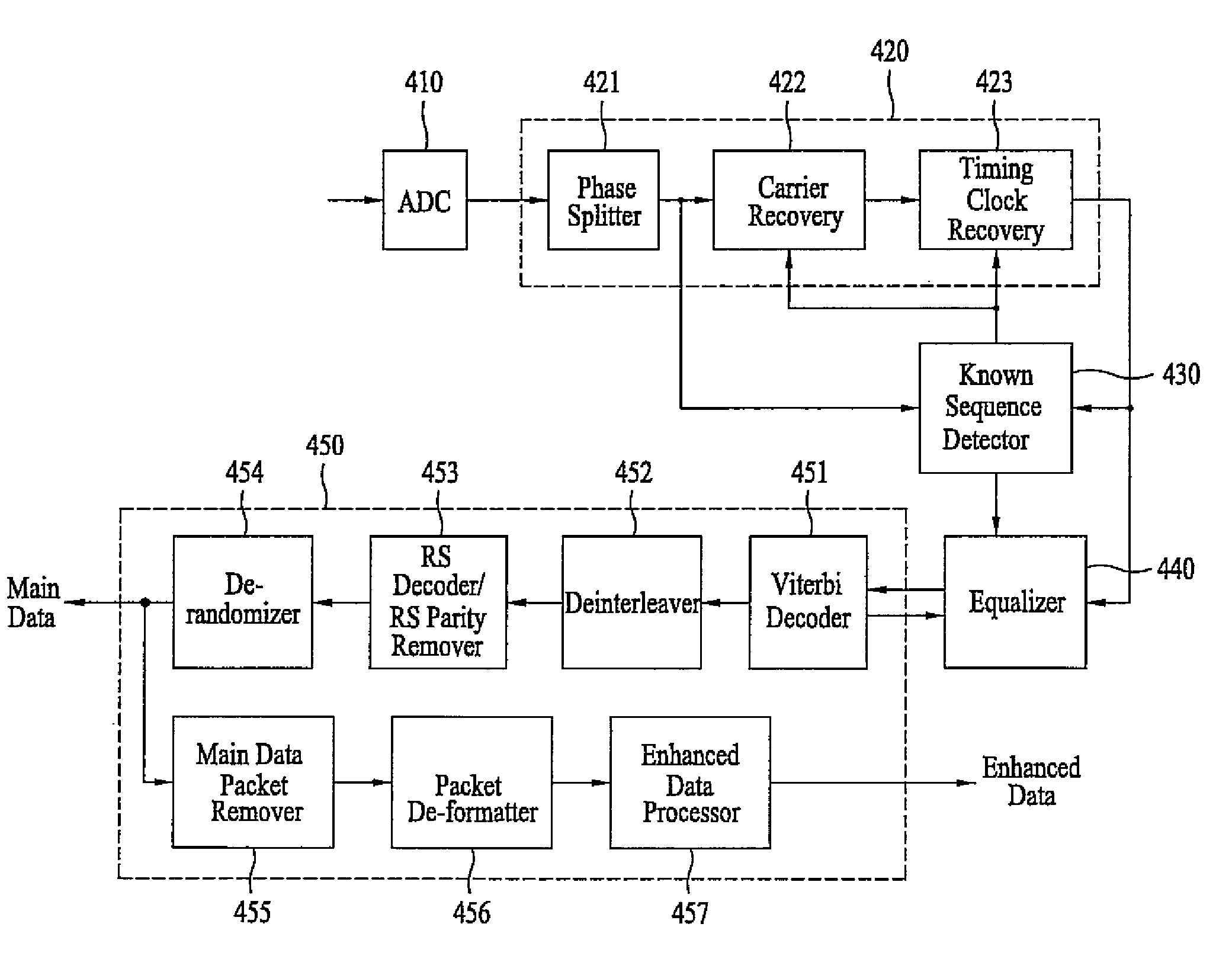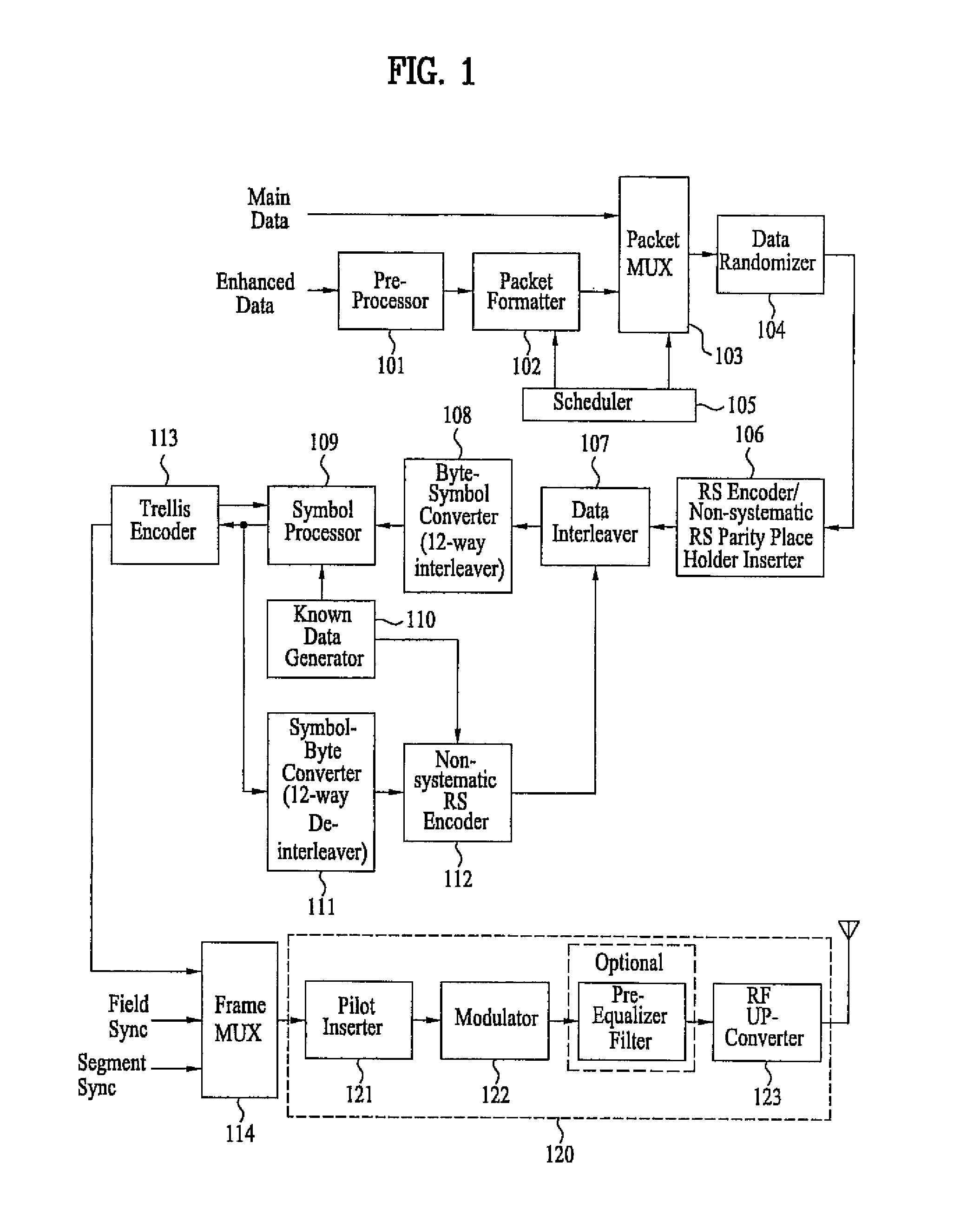Digital broadcasting receiving system and method of processing data
a digital broadcasting and receiving system technology, applied in the field of digital telecommunications systems, can solve the problems of data that is to be transmitted should have a low error ratio, the quality of the received digital signals may be deteriorated, and the intensity of signals may decrease, so as to enhance the receiving performance of the digital broadcasting (or television) system
- Summary
- Abstract
- Description
- Claims
- Application Information
AI Technical Summary
Benefits of technology
Problems solved by technology
Method used
Image
Examples
first embodiment
[0066]FIG. 7 and FIG. 8 illustrate the method of detecting the timing error by using the correlation between the known data (i.e., the known data generated from the receiving system), which are already known according to an agreement between the transmitting system and the receiving system, and the received data. FIG. 7(a) illustrates the process of calculating the correlation value between the known data sequence and the received signal sequence by moving the entire known data sequence, which is being repeated after each data block cycle, in accordance with the received signal sequence. At this point, as shown in FIG. 7(b), the correlation value between the known data sequence and the received signal sequence outputs a maximum or peak value (or correlation peak) at the last symbol position of the known data sequence corresponding to the received signal after each data block. FIG. 8(a) illustrates a method of calculating the correlation value by dividing the known data sequence to p...
second embodiment
[0072]The timing error may also be detected by using the frequency characteristics of the known data. More specifically, when a timing frequency error occurs, the phase is either increased or decreased at a constant rate so that the frequency within the bandwidth of the frequency domain signal can be increased. Accordingly, the increasing or decreasing inclination (or gradient) of the phase according to the frequency of a following block may change in proportion to the current block. Therefore, the inclination (or gradient) of the phase change according to the frequency using the frequency characteristic between two known data blocks may be detected, so as to be used as the timing frequency error.
[0073]FIG. 11 illustrates an example of detecting timing error using the frequency characteristics of the above-described known data. The currently received known data sequence is processed with fast fourier transform (FFT), thereby being converted to frequency domain signals. The previousl...
PUM
 Login to View More
Login to View More Abstract
Description
Claims
Application Information
 Login to View More
Login to View More - R&D
- Intellectual Property
- Life Sciences
- Materials
- Tech Scout
- Unparalleled Data Quality
- Higher Quality Content
- 60% Fewer Hallucinations
Browse by: Latest US Patents, China's latest patents, Technical Efficacy Thesaurus, Application Domain, Technology Topic, Popular Technical Reports.
© 2025 PatSnap. All rights reserved.Legal|Privacy policy|Modern Slavery Act Transparency Statement|Sitemap|About US| Contact US: help@patsnap.com



